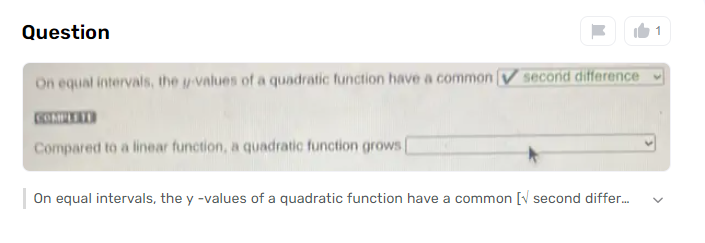Understanding how mathematical functions expand or contract is essential for making predictions and analyzing their behavior. The comparison of quadratic and linear functions is one that frequently arises. Quadratic functions grow more rapidly and dynamically than linear functions, whereas linear functions grow consistently.
This distinction in development rate has critical ramifications for different certifiable applications. The squared term in quadratic functions’ equations is reflected in their distinct growth rate. In contrast to the straight line of the linear function, this term causes the rate of change to increase exponentially with increasing input values. Let us explore on equal intervals, the y-values of a quadratic function have a common in our given article.
What do you know about the Growth Rate of Linear Functions?
Algebra’s fundamental concept of linear functions is frequently introduced in early math classes. At the point when we discuss the development pace of a direct capability, we are alluding to how rapidly the capability builds as its feedback esteem likewise increments. In less complex terms, it lets us know how quickly the result of the capability is changing corresponding to the information. In a direct capability, this development rate is steady.
This indicates that the output value also increases in proportion to the increase in the input value. When graphed, this constant rate of growth is what gives linear functions their diagonal, straight line. Similar to ascending a staircase, each step is the same height. Straight capabilities have a development rate that can be communicated as a basic proportion, or incline.
Investigating Quadratic Function Growth Rates
Quadratic capabilities are a sort of numerical capability that is usually seen in logarithmic conditions. It is essential to keep in mind that a quadratic function grows at a faster rate than a linear function when comparing their growth rates. This is because a quadratic function has a squared term, which means that the output value grows at an exponential rate as the input variable increases. Conversely, a direct capability has a consistent pace of development, where the result esteem expansions in an orderly fashion.
This distinction in development rate separates quadratic capabilities and makes them exceptional in the realm of math. A parabola, which is a curved shape that can open either upwards or downwards, can be seen on a quadratic function’s graph. The squared term in the equation is to blame for this curve because it accelerates the rate at which the function grows or shrinks.
Differences in Growth Rates Between Linear and Quadratic Functions
With regard to contrasting direct and quadratic capabilities, one of the key distinctions lies in their development rates.
Linear Functions
Growth at a Constant Rate In mathematics, linear functions are among the easiest to work with. The slope of the function remains constant throughout due to its constant rate of growth. This makes straight capabilities ideal for addressing situations where there is a steady increment or reduction after some time.
In a direct capability, the connection between the information variable (x) and the result variable (y) can be addressed by the situation y = mx + b, where m is the slant of the line and b is the y-catch. The rate at which a linear function expands or contracts is determined by its slope.
Quadratic Functions
Variable Pace of Development Then again, quadratic capabilities have a variable pace of development. A quadratic function’s growth rate is not constant, unlike that of linear functions. Instead, it shifts in line with the rise in the input variable.
The coefficient of the x^2 term (a) in a quadratic capability decides the pace of development of the capability. As the info variable (x) builds, the pace of development of a quadratic capability likewise increments at a speeding-up pace.
Comparing Rates of Growth
It becomes clear when comparing the growth rates of quadratic and linear functions that quadratic functions expand at a faster rate than linear functions do. This is because a quadratic function’s rate of growth is determined by the equation’s squared term (x2), resulting in a nonlinear growth pattern. This indicates that quadratic functions grow exponentially in practice.
How to Use Gauth AI to Solve Queries
Here are the steps to use Gauth:

Step 1. Input the Query
Let’s get started by entering your query. On the Gauth AI website, all you need to do is type in the math problem or concept you need help with in the search bar.
Step 2. Get the Solution
Gauth AI will examine the data after you enter your query and provide you with a comprehensive response. You could investigate bit-by-bit clarifications to acquire a superior comprehension of how the arrangement was reached.
Step 3. Utilize the Free Trial
On the off chance that you’re as yet not persuaded, you can make the most of Gauth’s man-made intelligence’s free preliminary. You can try out the platform and see how it can help you by doing this.
To Conclude
The quadratic function grows at a faster rate when compared to a linear function. As a result, the growth pattern of a quadratic function is characterized by a faster rate of increase when the input values are increased. We can better analyze and interpret data in a variety of mathematical and real-world scenarios if we have a better understanding of the differences in growth rates between these two types of functions.

